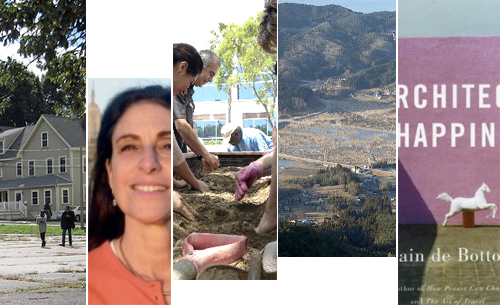HMC's community garden. Lessons for Oregon. Learning to innovate from Metropolis. The Dirt on the equity of smart growth. ArchDaily's noteworthy social media campaign.

Community garden. As part of Earth Week, HMC’s Ontario studio planted a community garden of vegetables and learned about compost, irrigation and earthworms.
There is, however, a community component, in launching the garden: hunger. The purpose of HMC’s community garden is to engage staff to volunteer and collaborate outside the studio, promote sustainable living, and inspire staff and visitors to start gardens of their own.
Lessons for Oregon. Architect Randy Nishimura writes on how the devastating Tohoku earthquake and tsunami in Japan in 2011 was a wakeup call and wealth of information for seismologists, hydrologists, and engineers in the Pacific Northwest.
Orgeon needs to become better prepared by investing more in earthquake and tsunami-resistant infrastructure and preparedness. “The challenges we would face when the unthinkable happens include how to deliver timely rescue and relief to affected coastal communities, especially if vital roads and other conduits through the Coast Range are severed.” – Randy Nishimura
Learning to innovate. Educator and businesswoman Michelle Greenwald shares key takeaways that companies like to hear in understanding how physical and mental environments can impact creativity and collaboration.
- It’s critical to allow and allocate time to innovate and do things well.
- A range of customer touch points makes new products and services great.
- It’s extremely important to create a psychological and physical environment that fosters innovation.
- Having a Methodical Process and Great Stimuli maximize creativity.
- All ideas need solid screening criteria that both fit what the brand stands for and make economic sense.
Is smart growth equitable? With the rise of “smart growth” approaches to urban development – the promotion of dense, walkable urban centers as an alternative to sprawl – there are questions whether smart growth is actually equitable.
Those compact, walkable neighborhoods are in hot demand across the country so it costs more to live there, which means not everyone gets to reap all the health benefits from living in a walkable community. In gentrifying neighborhoods, the issue is further compounded because people who once lived in these communities and could walk everywhere are being pushed out because they can’t afford the rising rents and property taxes. They are instead being shunted to the suburbs, the growing place for the poor in the U.S. where many can’t afford cars so they are even more affected.
Via The Dirt
Innovative Social Media Campaign
Arch Daily created an engaging social media campaign on Facebook to commemorate World Book Day. They asked “What is your all-time favorite architecture book?” followed by having people post their top books in the comment section and then follow “The Architect’s Library” on Pinterest where they have posted an amazing selection of books.
